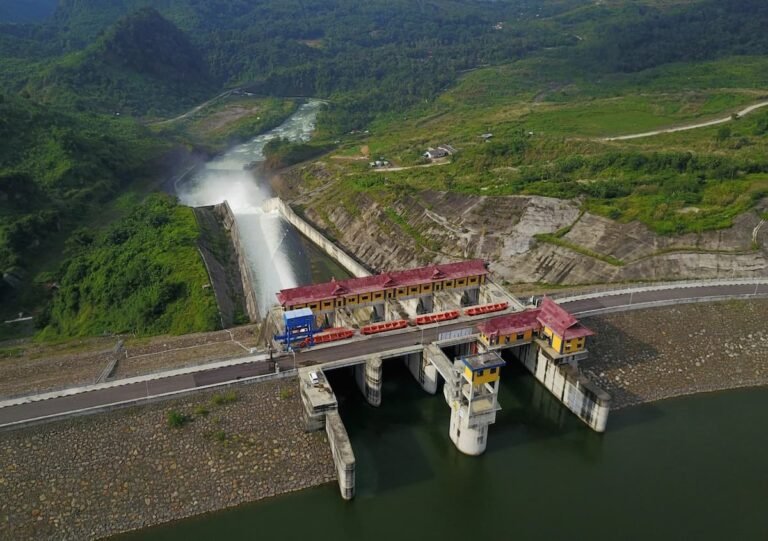Indonesia is accelerating its transition to renewable energy, aiming for 35% of its energy mix from clean sources by 2034. After the United States withdrew from the Just Energy Transition Partnerships (JETP) in March, China is emerging as the country’s main financing partner. However, experts warn that China’s domestic and international priorities may limit its full involvement in global climate financing. Putra Adhiguna, managing director of the Energy Shift Institute, says China and Germany could show leadership in renewable energy finance. Yet he notes challenges, including China’s resistance to being labeled a developed country. This classification would require it to contribute to the COP’s USD 100 billion annual climate fund for developing nations, set in 2009 at COP15. JETPs are designed to support developing nations in shifting to cleaner energy. They are funded by an International Partners Group, originally including Canada, Denmark, France, Germany, Italy, Japan, Norway, the Netherlands, the United Kingdom, and the US. Since the first JETP in 2021 for South Africa, Indonesia, Vietnam, and Senegal have joined the initiative.
Adhiguna points out that China occupies a delicate position. Its influence in the renewables sector is growing through technology exports, but it is hesitant to commit large-scale public financing. China has a domestic surplus of clean technology like solar panels and batteries. Expanding exports to Southeast Asia is cautious because local markets cannot fully absorb its production. Nevertheless, commercial financing from China is expected to continue. Indonesia’s Electricity Supply Business Plan (RUPTL), released in May, reinforces its renewable goals. The country aims to add 71 gigawatts of solar, hydro, and geothermal capacity over the next decade. Meeting these targets requires around USD 80 billion from 2024 to 2033, with an additional USD 30 billion for electricity transmission and distribution.
China has become a significant investor in Indonesia’s clean energy and technology sector. In 2023, 11 deals totaling USD 12.6 billion were signed at the Indonesia-China Business Forum. Another USD 10 billion deal followed in 2024. Investments include electric vehicles, lithium batteries, photovoltaic products, and renewable energy infrastructure. The partnership also extends to green mineral cooperation under memoranda of understanding signed by Indonesia’s government. Putra Maswan, an analyst at the Institute for Essential Services Reform, says Indonesia relies on China’s technology for solar, wind, and electric vehicles. “Indonesia is a potential strategic market for EVs and energy transition. China owns the technology that works for us,” he explains.
Since 2013, China has provided nearly USD 4 billion annually for climate projects in developing countries, reaching over USD 34 billion by 2021 through policy banks. In Southeast Asia, China supplied just over USD 2.7 billion in public clean energy investments from 2013 to 2023, with Indonesia receiving the largest share. In 2024, the Belt and Road Initiative contributed USD 404.6 million in clean energy funding to Indonesia. Despite this, Adhiguna notes a decline in China’s overseas financing since 2016. Public bank involvement in Indonesia’s renewable sector remains limited, with most financing coming from private investors.
China’s transition from coal financing to green projects presents an opportunity for Indonesia. Smaller, targeted projects under the Belt and Road Initiative reflect this shift, though China’s investments in fossil fuels continue to dominate. Large hydropower projects, such as the 110-megawatt Jatigede plant in West Java, show China’s selective engagement. Meanwhile, the USD 27 billion Kayan hydropower project in North Kalimantan saw Chinese withdrawal, leaving Japan as a key backer. Experts stress that Indonesia cannot rely solely on Chinese investment. Tiza Mafira, associate director at the Climate Policy Initiative Indonesia, says the country needs a mix of funding sources. Many projects are not commercially viable yet due to slow regulatory support. Public funds, concessional loans, and blended financing mechanisms are essential to attract private investors. China remains critical due to its technological leadership and large-scale production of renewable energy products. However, Indonesia also seeks to balance foreign investment with domestic industry development and affordable energy costs.
China’s role in Indonesia’s renewable energy transition is pivotal but not all-encompassing. While private financing and technological support are likely to continue, public funding remains limited. Indonesia’s success depends on a combination of Chinese investment, domestic regulation, and other international funding sources to achieve its clean energy targets by 2034.







